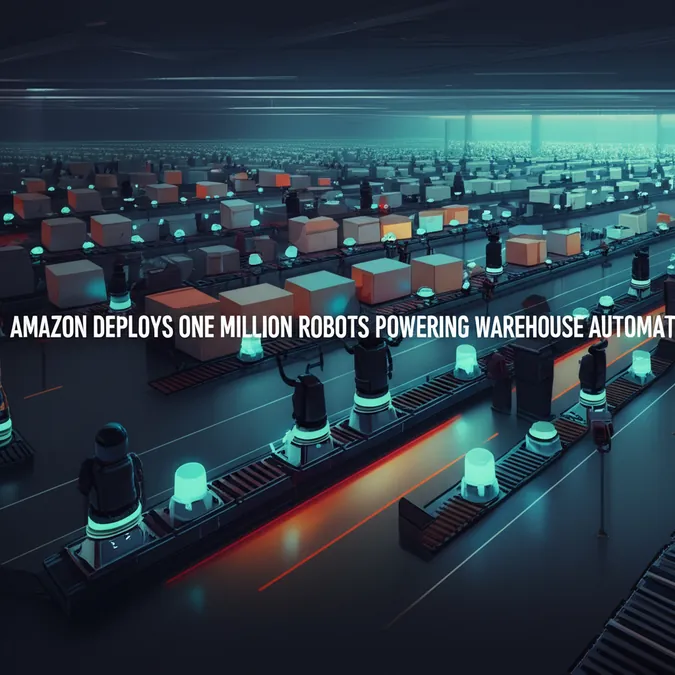Developer Offer
Try ImaginePro API with 50 Free Credits
Build and ship AI-powered visuals with Midjourney, Flux, and more — free credits refresh every month.
Amazon Builds Massive AI Hub on Indiana Farmland
The race to dominate the artificial intelligence landscape is heating up, and Amazon is making a monumental investment to secure its position. On 1,200 acres of what was once fertile Indiana cropland, the tech giant is constructing a vast network of AI data centers. This ambitious project is designed to power the goals of the startup Anthropic, which aims to develop an AI model with the complexity and power of the human brain. While this marks a major step forward in technology, it also casts a spotlight on the significant environmental and community consequences.
From Farmland to Data Farms
Indiana's landscape is undergoing a dramatic transformation as Amazon builds out its massive AI infrastructure. The project, which supports Anthropic's quest for a human-like AI, will eventually feature approximately 30 state-of-the-art data centers. The sheer speed and scale of the operation are staggering, with four separate construction firms working simultaneously to bring the vision to life.
Bill Schalliol, a local economic development official, noted the intensity of the construction, describing it as a competition among the crews. This aggressive expansion isn't isolated to Indiana; Amazon is planning similar complexes in Mississippi, signaling a nationwide strategy to build the next generation of AI facilities. This places them in direct competition with other major players like Meta and OpenAI, all vying for supremacy in the AI arena. This push for infrastructure is part of a broader corporate strategy, which includes ambitious plans in other high-tech sectors.
The Environmental and Resource Toll
While promising technological leaps, the construction and operation of AI data centers come at a steep price. These facilities are incredibly demanding in terms of energy and water. To manage operational costs, Amazon is utilizing less advanced chips that don't require complex liquid cooling systems, instead opting for large air handlers and municipal water to regulate temperatures.
Despite this, the completed data centers are projected to consume a staggering 2.2 gigawatts of electricity—enough to power millions of homes. The water needed for cooling is also substantial, raising alarm among local residents who have already reported dry wells and other disruptions due to construction. The controversy is further fueled by the development's encroachment on a wetland, highlighting the tension between technological ambition and environmental preservation. The resource demands are a critical part of the project's story, as seen with other large-scale Amazon endeavors that have faced challenges.
| Resource | Impact |
|---|---|
| Electricity | 2.2 gigawatts, sufficient for millions of homes |
| Water | Significant diversion for cooling, leading to dry wells |
Local Impact: A Tale of Two Fortunes
The effects of Amazon's AI project ripple throughout the local community, creating both opportunities and challenges. On one hand, the initiative promises economic growth through job creation and significant investment in the region. On the other hand, these benefits are weighed against serious environmental and social concerns.
The conversion of agricultural land into an industrial complex is fundamentally altering the region's character and way of life. Furthermore, the environmental toll is a growing point of contention. When water is diverted for industrial cooling, local ecosystems can suffer. The bulldozing of wetlands, for example, poses a direct threat to biodiversity and destroys natural habitats. These issues force a difficult conversation about balancing progress with stewardship. This kind of large-scale corporate activity often has unforeseen consequences for consumers and the environment.
Charting the Future of AI Development
As Amazon and its competitors continue to pour billions into AI infrastructure, rural America is poised for a dramatic transformation. This shift from agriculture to high-tech industry reflects a larger economic evolution in the digital era. While this transition brings the promise of innovation, it also raises critical questions about sustainability and responsible resource management.
How can communities successfully navigate this transition, reaping the benefits of technology while preserving their natural resources and environmental health? As the debate over water rights and energy consumption intensifies, it is crucial to find solutions that align technological advancement with environmental conservation. The central challenge is to develop strategies that ensure the rewards of AI are distributed equitably while mitigating the negative impacts on local communities and ecosystems.
Compare Plans & Pricing
Find the plan that matches your workload and unlock full access to ImaginePro.
| Plan | Price | Highlights |
|---|---|---|
| Standard | $8 / month |
|
| Premium | $20 / month |
|
Need custom terms? Talk to us to tailor credits, rate limits, or deployment options.
View All Pricing Details

